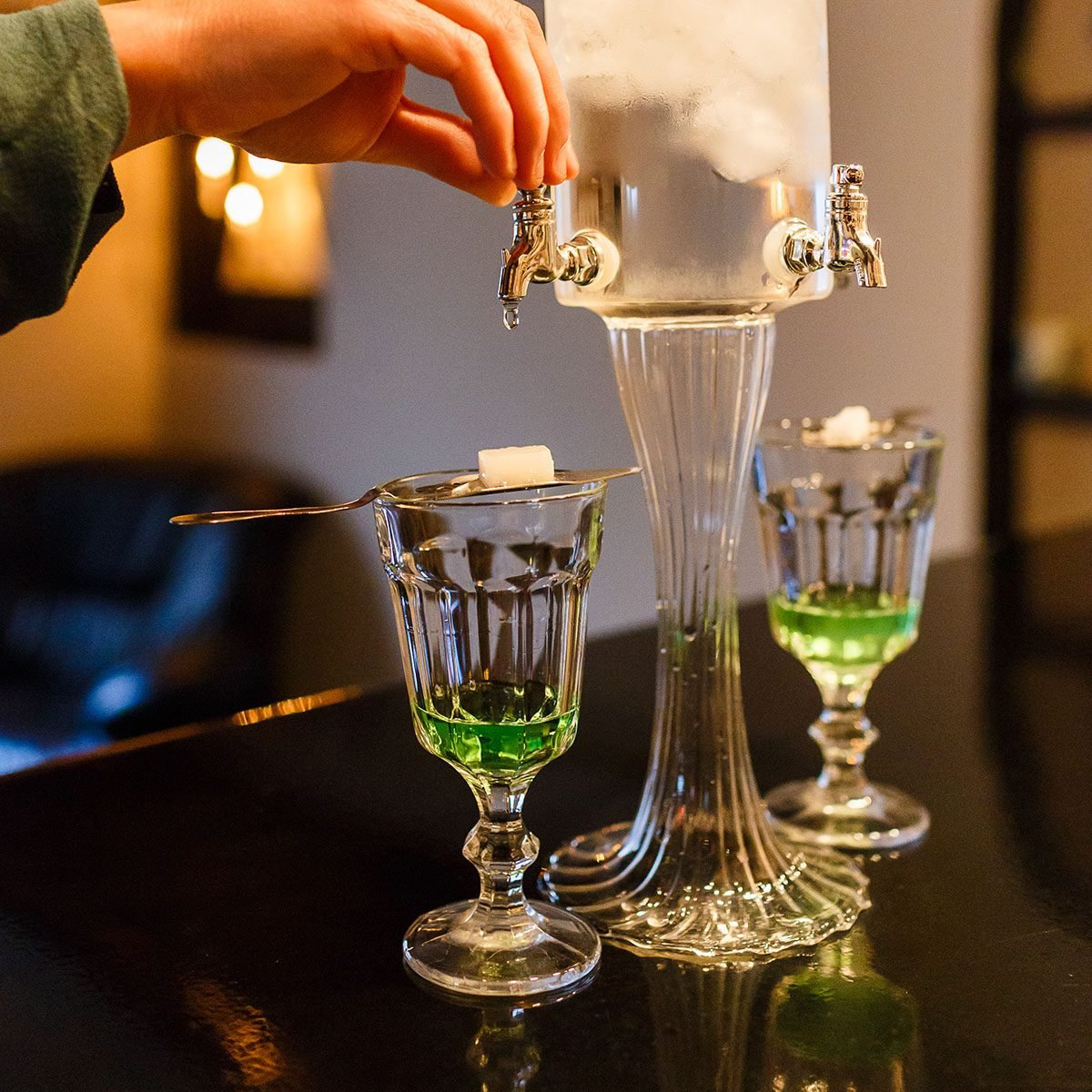Absinthe is a distilled alcoholic beverage that has a history of controversy and mystique. It is made from various herbs, including wormwood, which contains a chemical called thujone that is said to have psychoactive effects. Absinthe is also known for its distinctive green color and anise flavor, which some people compare to licorice. In this article, we will explore the origins, production, consumption, and regulation of absinthe, as well as its cultural influence and health effects.
Absinthe was first invented in Switzerland in the late 18th century by a French doctor named Pierre Ordinaire, who used it as a medicine. He sold his recipe to a French distiller named Henri-Louis Pernod, who started mass-producing absinthe in France in the early 19th century. Absinthe soon became popular among the artistic and bohemian circles of Paris, where it was believed to stimulate creativity and imagination. Some of the famous absinthe drinkers include Vincent van Gogh, Oscar Wilde, Edgar Allan Poe, and Ernest Hemingway.
Absinthe is traditionally prepared by pouring cold water over a sugar cube placed on a perforated spoon, which rests on a glass of absinthe. The water slowly dissolves the sugar and dilutes the absinthe, creating a cloudy effect known as the louche. The ratio of water to absinthe varies according to personal preference, but usually ranges from 3:1 to 5:1. Some people also like to add ice or other flavorings, such as mint or lemon, to their absinthe.
Absinthe has a high alcohol content, usually between 45% and 74%, but it can go up to 89%. This makes it one of the strongest spirits in the world, and also one of the most dangerous. Absinthe has been associated with various health problems, such as liver damage, seizures, hallucinations, and addiction. The main culprit is thujone, a neurotoxin that can interfere with the brain's receptors and cause convulsions and delirium. Thujone is also found in other plants, such as sage and tansy, but in much lower concentrations.
Absinthe's reputation as a harmful and hallucinogenic drink led to its prohibition in many countries in the early 20th century. The first country to ban absinthe was Switzerland in 1908, followed by France in 1915, and the United States in 1912. The ban was partly motivated by moral and social concerns, as absinthe was seen as a threat to public order and family values. It was also influenced by the wine industry, which saw absinthe as a competitor and spread propaganda against it. Some of the anti-absinthe campaigns depicted absinthe drinkers as violent, insane, and criminal.
However, absinthe never completely disappeared from the world. It continued to be produced and consumed in some countries, such as Spain, Portugal, and the Czech Republic, where it was never banned or had lax regulations. It also experienced a revival in the late 20th and early 21st centuries, as new scientific research and legal reforms challenged the myths and misconceptions about absinthe. Modern absinthe is usually made with lower levels of thujone, and is regulated by the same standards as other alcoholic beverages. Absinthe is now legal in most countries, including France, Switzerland, and the United States, where it was re-legalized in 2007.
Absinthe is more than just a drink. It is also a symbol of art, culture, and rebellion. Absinthe has inspired many works of literature, music, painting, and cinema, as well as fashion and design. Absinthe is often portrayed as a mysterious, exotic, and seductive substance, with a hint of danger and madness. Absinthe is also a part of the ritual and aesthetic of the absinthe culture, which celebrates the history, tradition, and style of the drink. Absinthe enthusiasts enjoy collecting and using antique absinthe paraphernalia, such as glasses, spoons, fountains, and posters.
Absinthe is a fascinating and complex drink that has a rich and colorful history. It is a drink that can be enjoyed responsibly and moderately, as well as appreciated for its cultural and artistic value. Absinthe is a drink that invites curiosity and exploration, as well as respect and caution. Absinthe is a drink that can open your mind and senses, but also challenge your perceptions and expectations. Absinthe is a drink that can make you see the world in a different light, but also remind you of the dark side of human nature. Absinthe is a drink that can be both a friend and a foe, a muse and a monster, a dream and a nightmare. Absinthe is a drink that can be anything you want it to be, but also something you can never fully understand. Absinthe is a drink that is, in a word, absinthe.
Tags:
Encyclopedia

